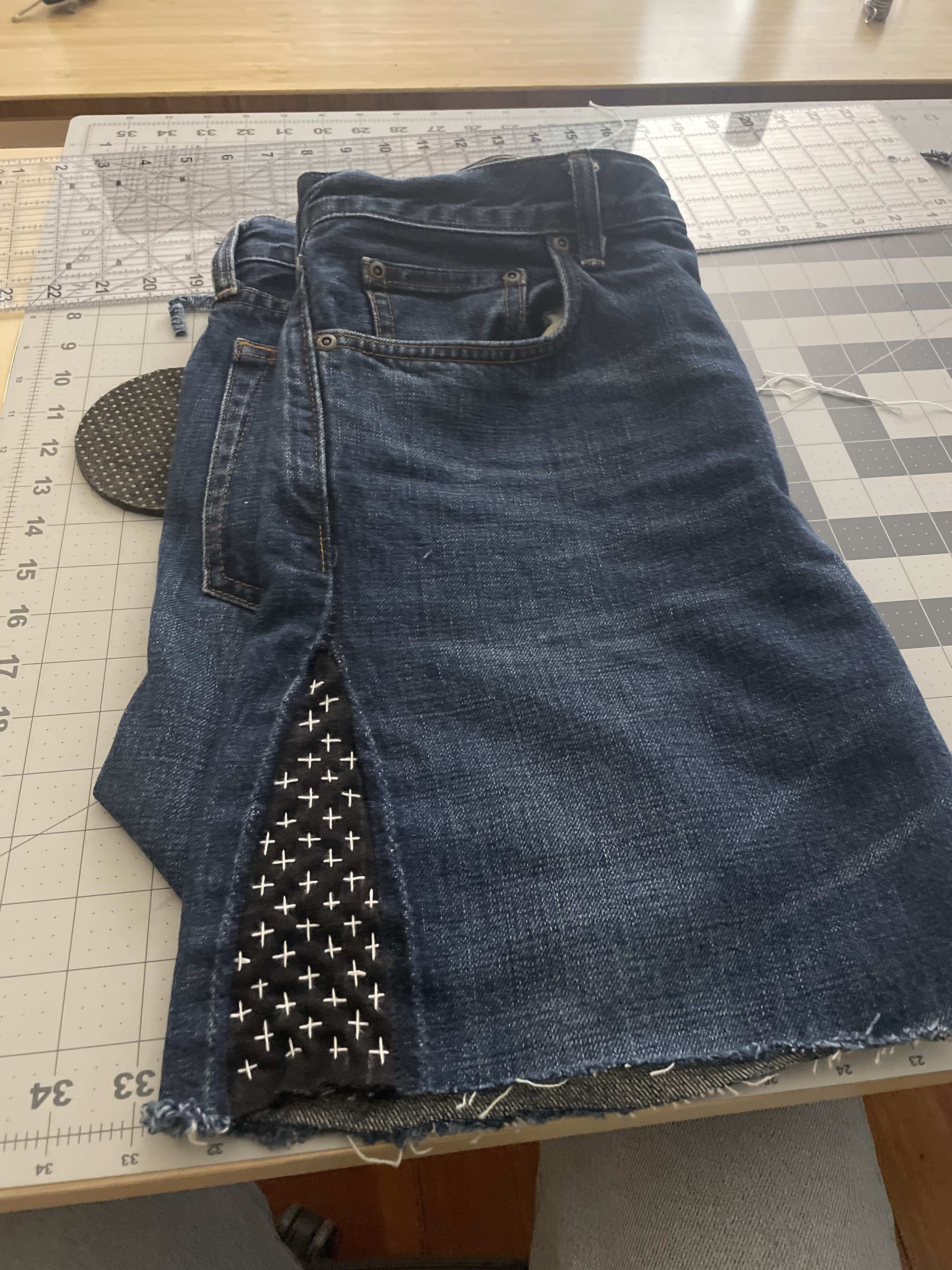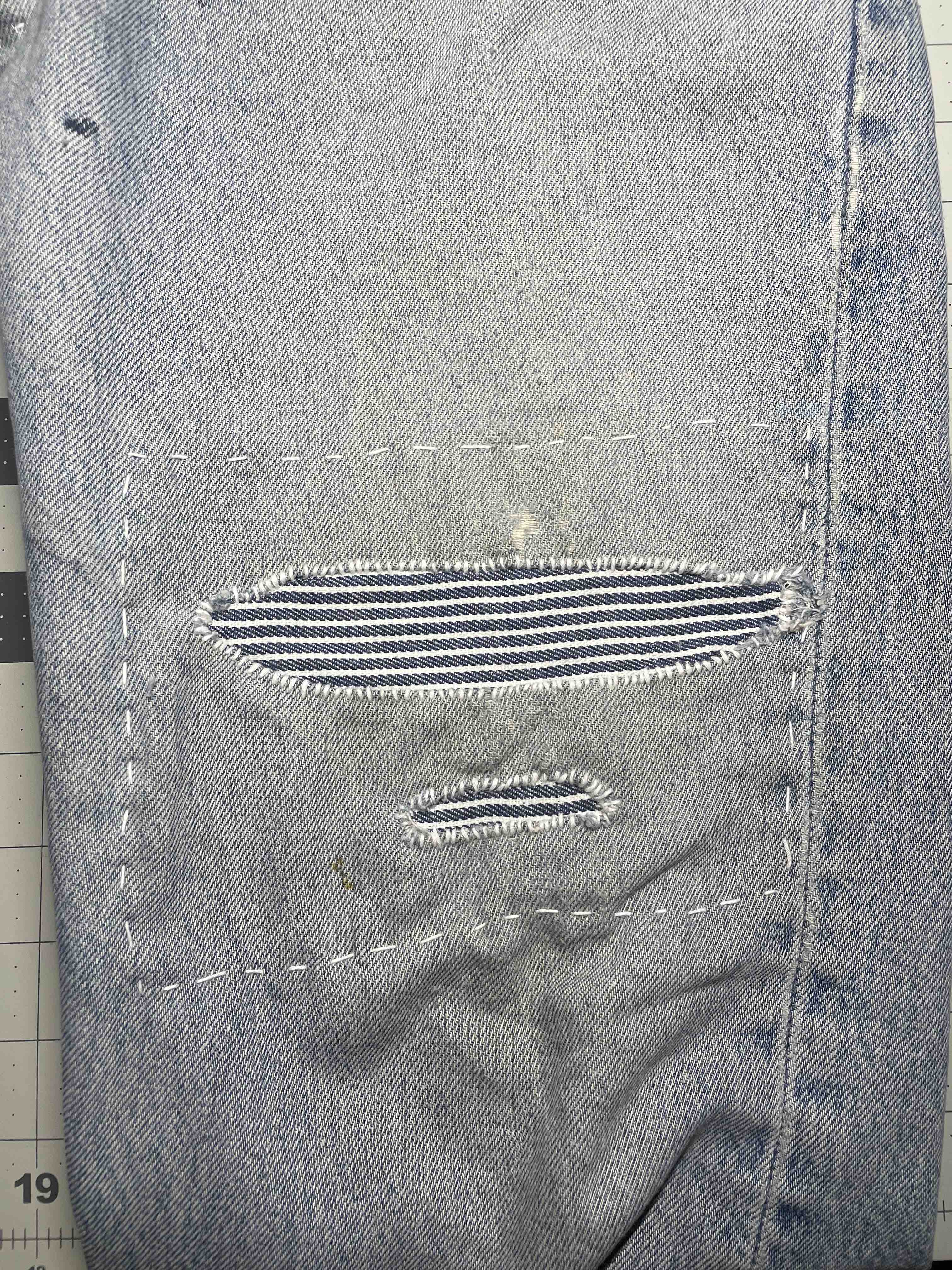Some Thoughts on Repair
This is a cross-post with my newsletter. You can subscribe here if you’re interested in getting some thoughts in your inbox occassionally.
Lately, I’ve been spending a lot of time on mending and repair. Most of my jeans are thrifted and/or old, and tend to get torn up from cycling. It’s nice to spend time making them usable once again.


This focus on repair brings up a lot of different thoughts.
I spend a lot of my life in technical, academic, and cultural spaces that prioritize things like novelty, “innovation”, progress, and improvement. Economists study the “ideas production function”, innovation, and its connection with growth. Technologists imagine desirable sociotechnical futures to motivate present investments. Social progressivism too, is undergirded by a belief that the ways we live together can be made better, more fair, more just. Improvement is ever good and worthy.
Repair connects with a different set of values—values like preservation, stability, conservation, and care. It is a slow process to hand-stitch a patch on to a pair of jeans; it takes time, effort, and attention. And at the end, this effort does not lead to the jeans being reinvented in some deep way. They are basically the same jeans — just restored, maintained, kept in working order. The irony is that this emphasis on conservation can also make practice of repair feel “novel” or even “radical” in the context of a world of intentional disposability and novelty fetishism.
But repair can also be understood to participate more explicitly in the drama of new-ness. For example, the patch above has decorative elements, giving the jeans a novel feel even as it restores them. Sashiko is both functional and decorative.


Re-making paradigms like “upcycling”, visible/decorative mending, and even collage further emphasize the refashioning of something old into something new. Of course, nearly all making involves turning some existing (“old”) things into something “new”; but re-making paradigms highlight that it matters who is doing the (re)making, and from what. These practices reach across the chasm of commercial alienation, offering a different way to appreciate the things we own, how they were made, and how they might be different. Even as they participate in the desire for “newness”, they also contest the category boundaries and linearity of “old” and “new”, “useful” and “obsolete”.
References
Mending Life: A Handbook for Repairing Clothes and Hearts by Montenegro & Montenegro is a nice book on mending clothes.
The Innovation Delusion by Vinsel and Russell — this has been on my list for a long time; I haven’t read it but have osmosed some of the ideas.
The Maintainers are an interesting group also connected with Vinsel & co.
Jessamy Shay made the above knee patch and does lots of cool mending stuff in the Cambridge/Somerville area.
Mending Matters by Rodabaugh also has some helpful tips on mending clothes.